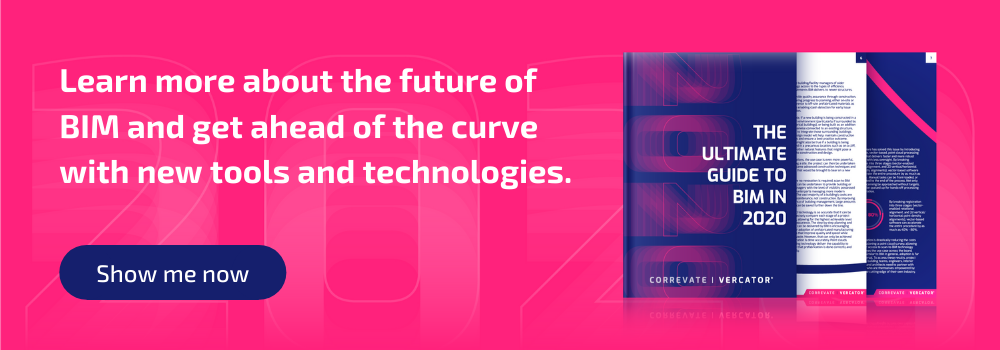How to make a digital twin: the options, types and outputs

Digital twins appear to be everywhere nowadays — but how do you go about making them and are they all the same? Getting the basics figured out is critical to making sure that you have the right resources to construct your twin in a way that makes sense for the project at hand.
What is a digital twin?
A digital twin is a model of business processes and physical assets. This combination of the virtual and physical worlds allows real-time monitoring of data and systems. Digital twin models of physical objects collect real-time data about the structure via sensors and other wireless technologies. They help improve the design and quality of projects as well as reduce maintenance costs.
Why you might want a digital twin
Digital twins give you the ability to:
- Spot problems before they occur
- Prevent downtime
- Develop new opportunities
- Plan “what if” scenarios using simulation.
Gartner reckons there will be billions of things represented by digital twins within the coming years. Digital twins help companies improve their customer experience, enhance existing products, and even drive innovation in a variety of sectors.
Types of Digital Twin
- Stand-alone digital twins: These are virtual replicas of individual products/equipment. They can help monitor and optimise the performance of individual assets, people, and other physical resources.
- Duplicated digital twins: They help monitor and optimise the use of a combination of related discrete digital twins, e.g. virtual models of multipart systems, such as cars, industrial machines or buildings.
- Enhanced digital twins: These are virtual models of complex and broad entities (e.g. an entire organisation or a city). They are made up of digital twins of their constituent parts. They help monitor and optimise higher-order performance.
How to make different types of digital twins
Stand-alone Twin
A Stand-alone digital twin will contain enough data to create a model of an element within the overall system. For example, in an HVAC system digital twin, a view on the health of the asset can be made by monitoring sensors attached to that system.
How it’s made
The Stand-alone digital twin typically contains a small number of data sources. At this stage, a toolkit can be created to enhance the twin with accurate as-is data from other sources. For example, data from CAD systems, 3D models or via point clouds created using laser scanning can be used to match with sensor output.
What it’s used for
Limited digital twins can be useful to monitor key metrics or states from one particular asset such as HVAC or environmental systems. They can also be used to ensure key elements of a construction site are compliant and match with the original design.
Duplicated Twin
The Duplicate form of a digital twin contains all the significant and measurable data sources you require to mirror the complete asset.
Elements of Limited digital twins could be aggregated to form the Duplicate model. This is where the granularity of the model can end up being too detailed a twin for your needs. Your goals need to be clear to avoid capturing too much data.
How it’s made
Leveraging the potential of Duplicated digital twins involves moving from gauges and dashboards into augmented, virtual representations of physical assets, With this comes the risk of added complexity.
Modelling and implementing the correct digital twin can multiply the value and utility of this form of digital twin while minimising the risks.
BIM database-first models provide an exciting basis for a Duplicate model. BIM was developed to enable greater collaboration in the construction industry. It also provides a single-source-of-truth platform that allows data to be flexibly viewed. These capabilities would also help digital twin models deliver the right information to the right people at the right time. Software analytics and Artificial intelligence (AI) would update the digital twin as its physical twin changes.
What it’s used for
Digital simulations of a Duplicated digital twin can help prevent actual problems. Smart components connected to a cloud-based system can gather sensor data, allowing analysis of real-time status and comparisons with previous performance.
Enhanced Twin
Digital twins have the capability to move far beyond single pieces of equipment or single buildings. The future of the digital twin is driven by scale.
How it’s made
The Enhanced digital twin expands to include other sources of data from the connected asset. This would include correlated environmental data from external sources and intelligence from external analytics and algorithms.
What it’s used for
The more complicated the system, the harder it is to manage and control all of its components. This is why digital twins are a massive opportunity for interconnected cities of the future. They will provide the data and analysis needed to optimise people, planning and resources.
Technology worth watching
Digital twins integrate many technologies, such as Artificial Intelligence or Machine Learning. Developments in 3D laser scanning and IoT sensors are building on previous innovations to make a major contribution to the future of digital twins.
Where there is a visual element, as in the built environment, point cloud processing, scanning technology and LiDAR are central to the creation of the digital twin model framework.
Internet of Things sensors
Digital twins are made possible mainly due to Internet of Things (IoT) sensors. Integrating IoT capability directly into modules or hardware is set to be a significant market disruptor. This will significantly simplify the setup and deployment of IoT devices and hence the cost to deploy.
3D laser scanning software
One of the unsung heroes of digital twin technology is reality capture. Vector-based, multi-stage point cloud processing (or stitching) is providing the visual data for digital twins. You can learn more in our guide to point cloud processing.
AI and Machine Learning
Given the vast amount of data produced, artificial intelligence and machine learning are the only way to analyse the model of operations represented by the digital twin. For digital twins to deliver on their promise, they must be able to run analytics in real-time or faster, provide a high degree of prediction accuracy, and integrate data from a collection of disparate and often incompatible sources.
5G Connectivity
Underpinning every digital twin use case is connectivity. 5G is becoming a key component. 5G promises a range of capabilities that will transform digital twin capabilities: low latency, high bandwidth, high capacity, strong reliability, advanced mobility and longer battery life.
For example, a 4G network can support up to 5500 to 6000 IoT devices on a single cell. With a 5G network, up to one million devices can be handled.
Cloud Computing
Cloud technology provides the means to process and run digital twins. Microsoft already provides a growing range of Azure Digital Twin products to help with this objective. In contrast, Amazon Web Services (AWS) is offering a “Device Shadow” service as part of their AWS IoT line-up. Many more will follow.
Remember that digital twins are still an emerging technology, so test the waters. Here are a few recommendations to follow:
- Set aside a budget for testing digital twins and other related technologies
- Experiment in areas that have already been successful elsewhere
- Research technologies needed for digital twins
- Reach out to experts to explore digital twin technology
Tags: Digital Twin


